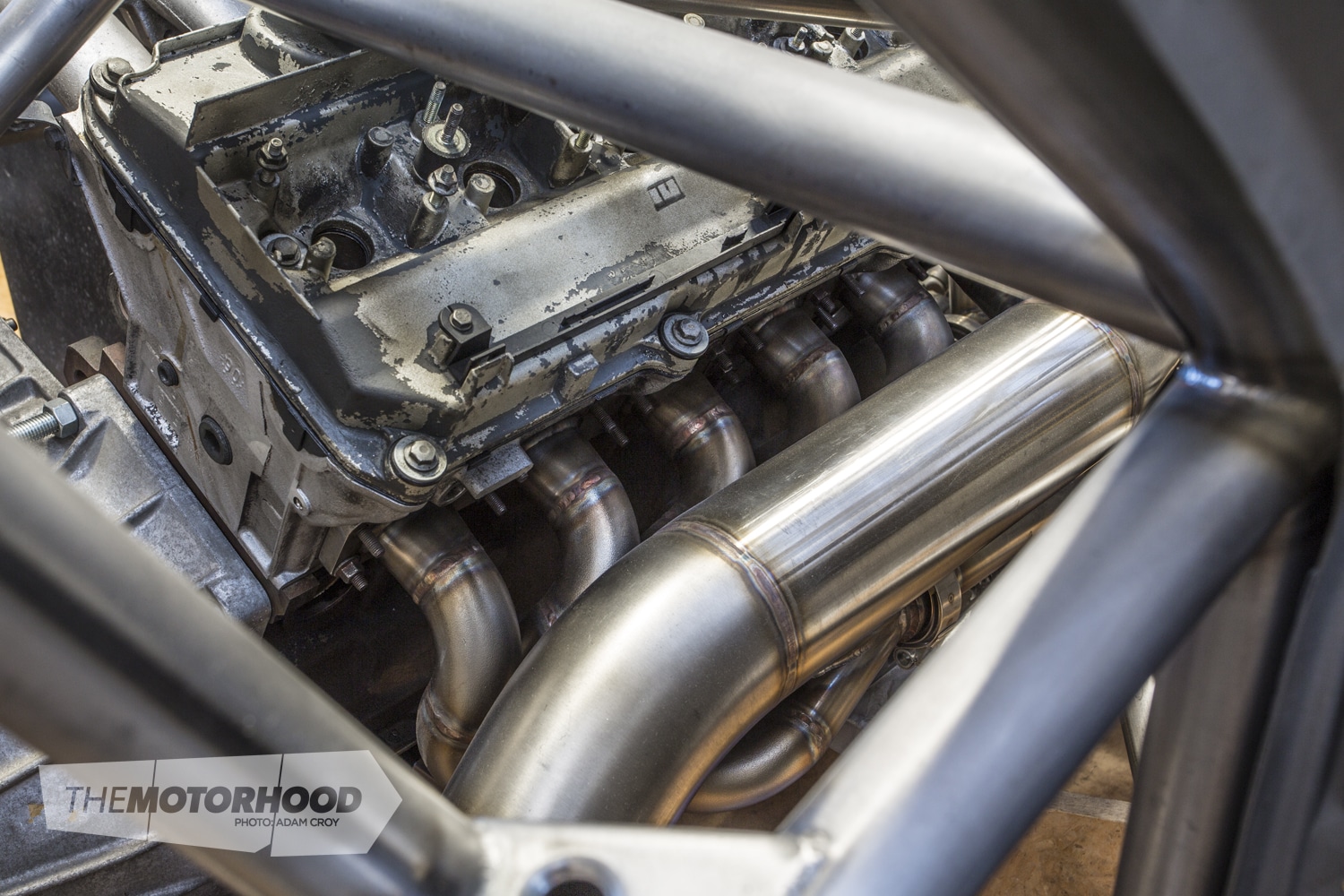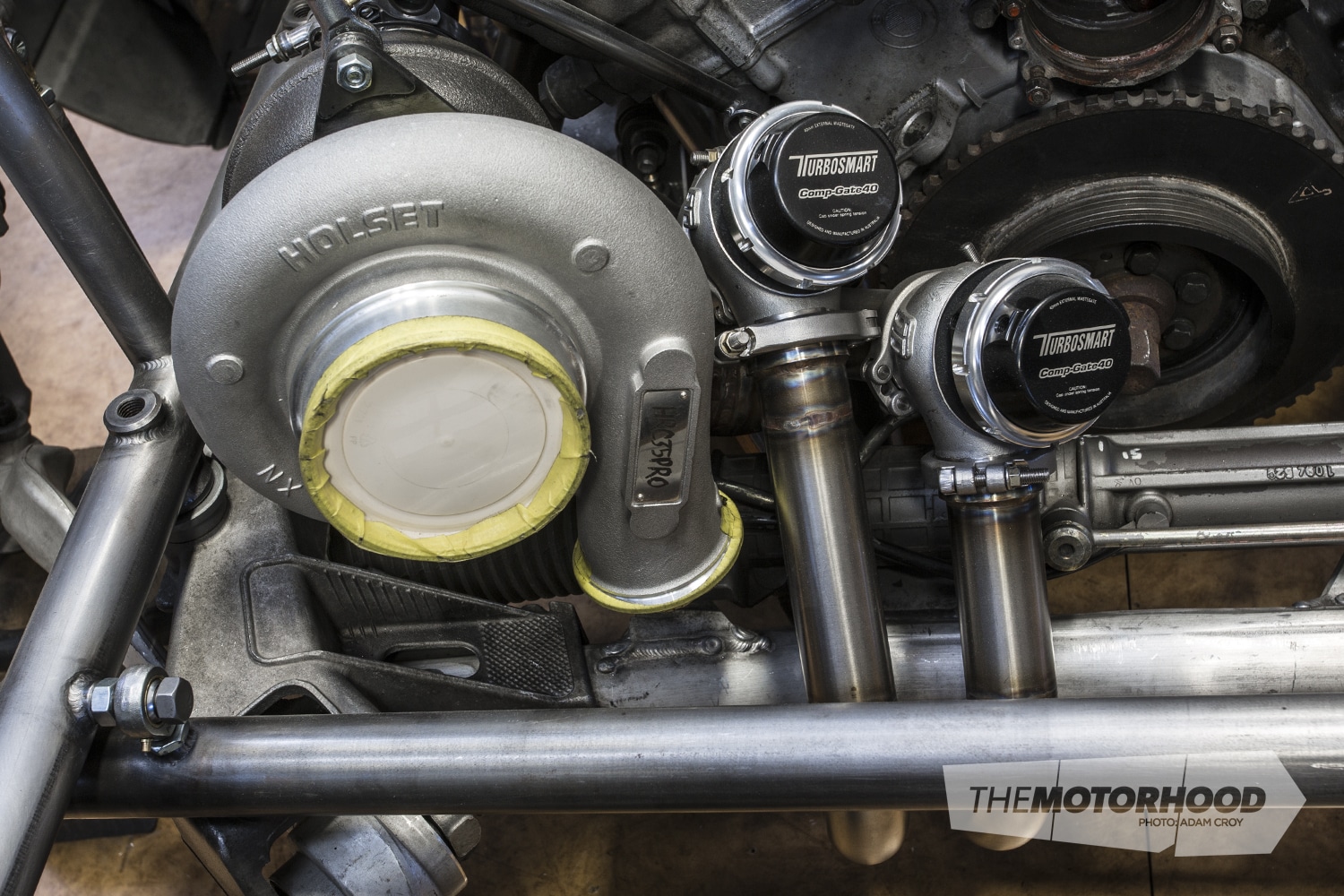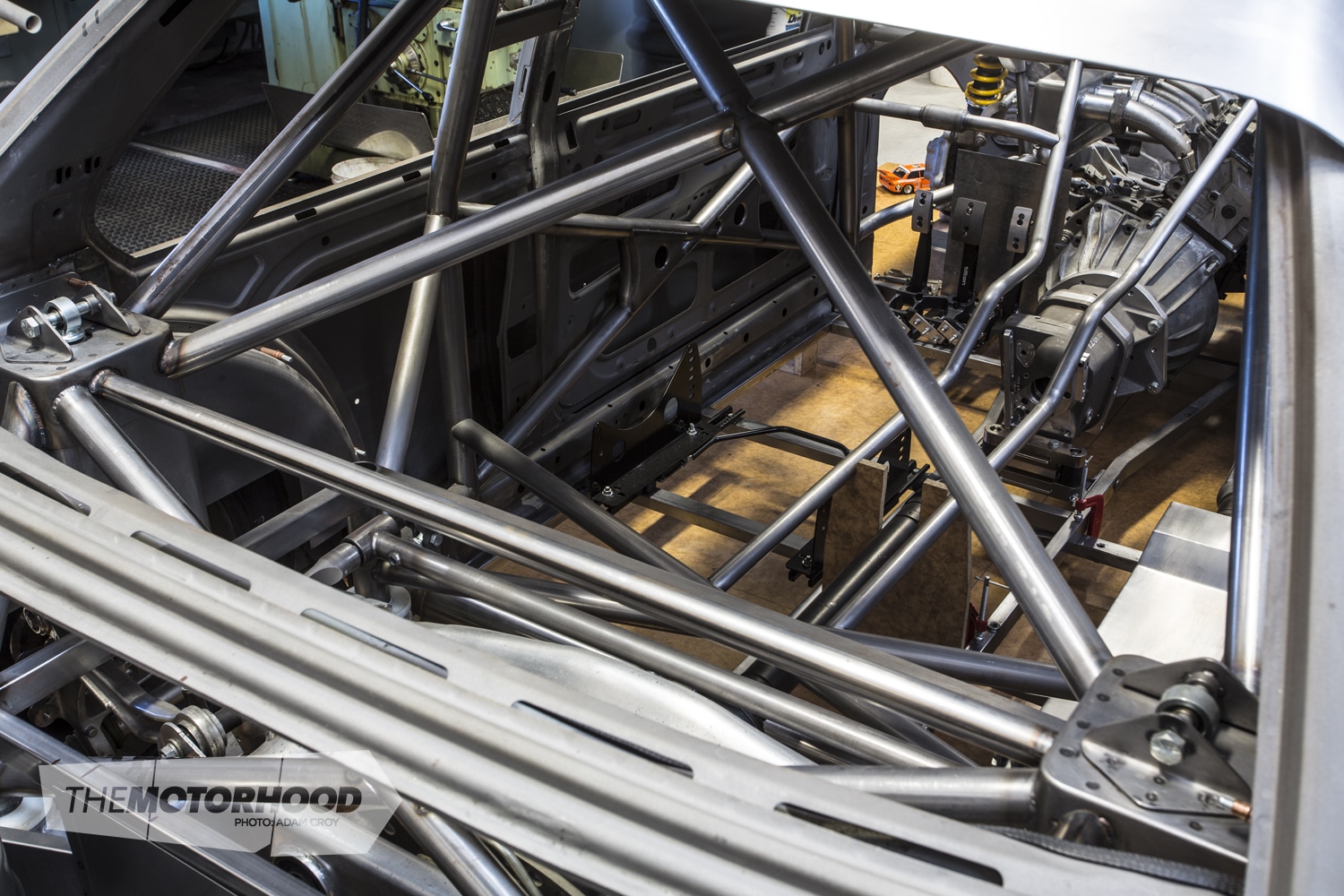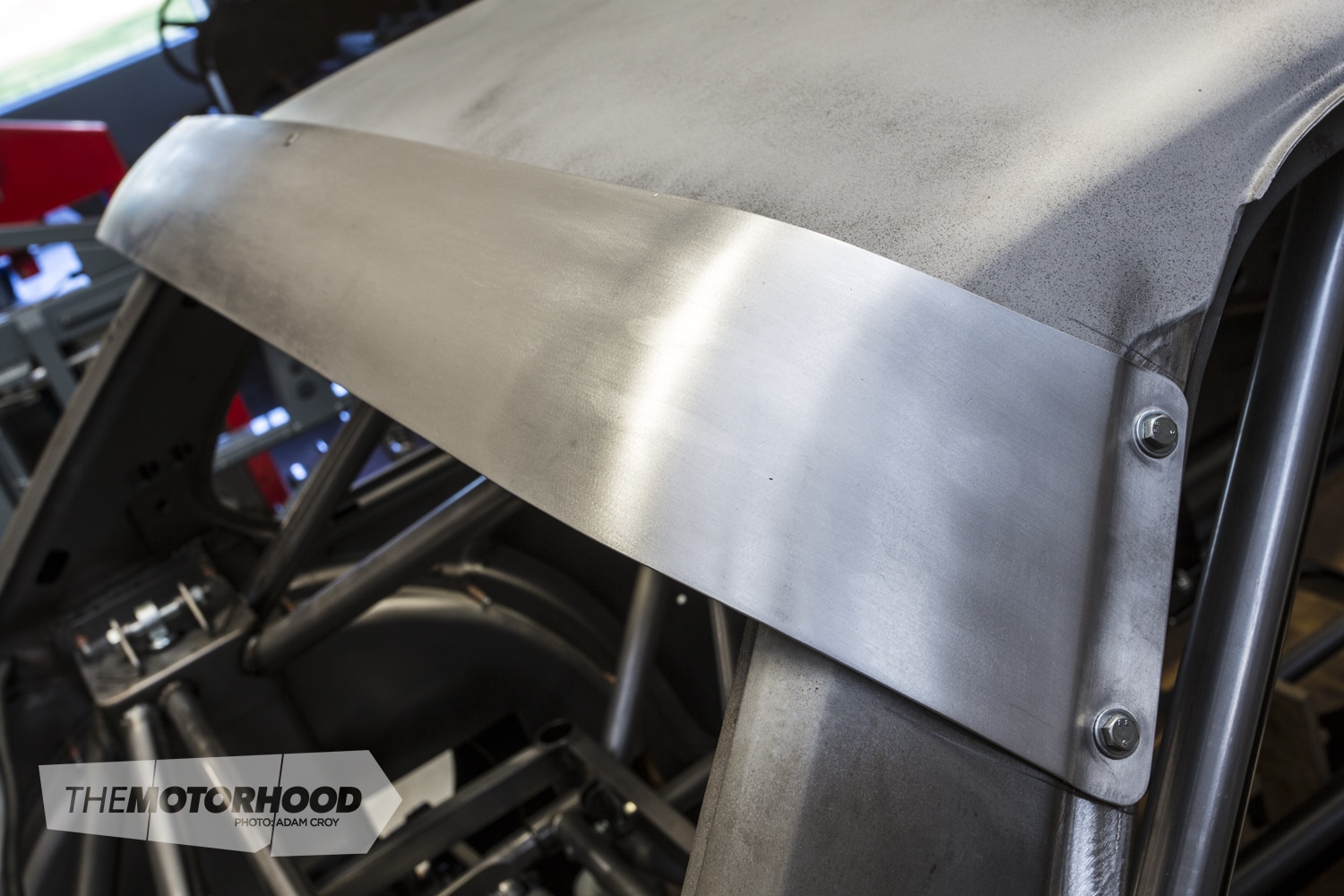When looking to build a track-day car for his sons and himself, Richard Pykett went about it in a way that most others would not dare; by hand building a Group 5 replica in the shed. But upon entering Richard’s workspace I soon realized that this was not your average two-car storage box. Instead, its a home fabricator’s dream. But we weren’t there to check out the shed — it was the E21 shell sitting centre stage that was calling my name.
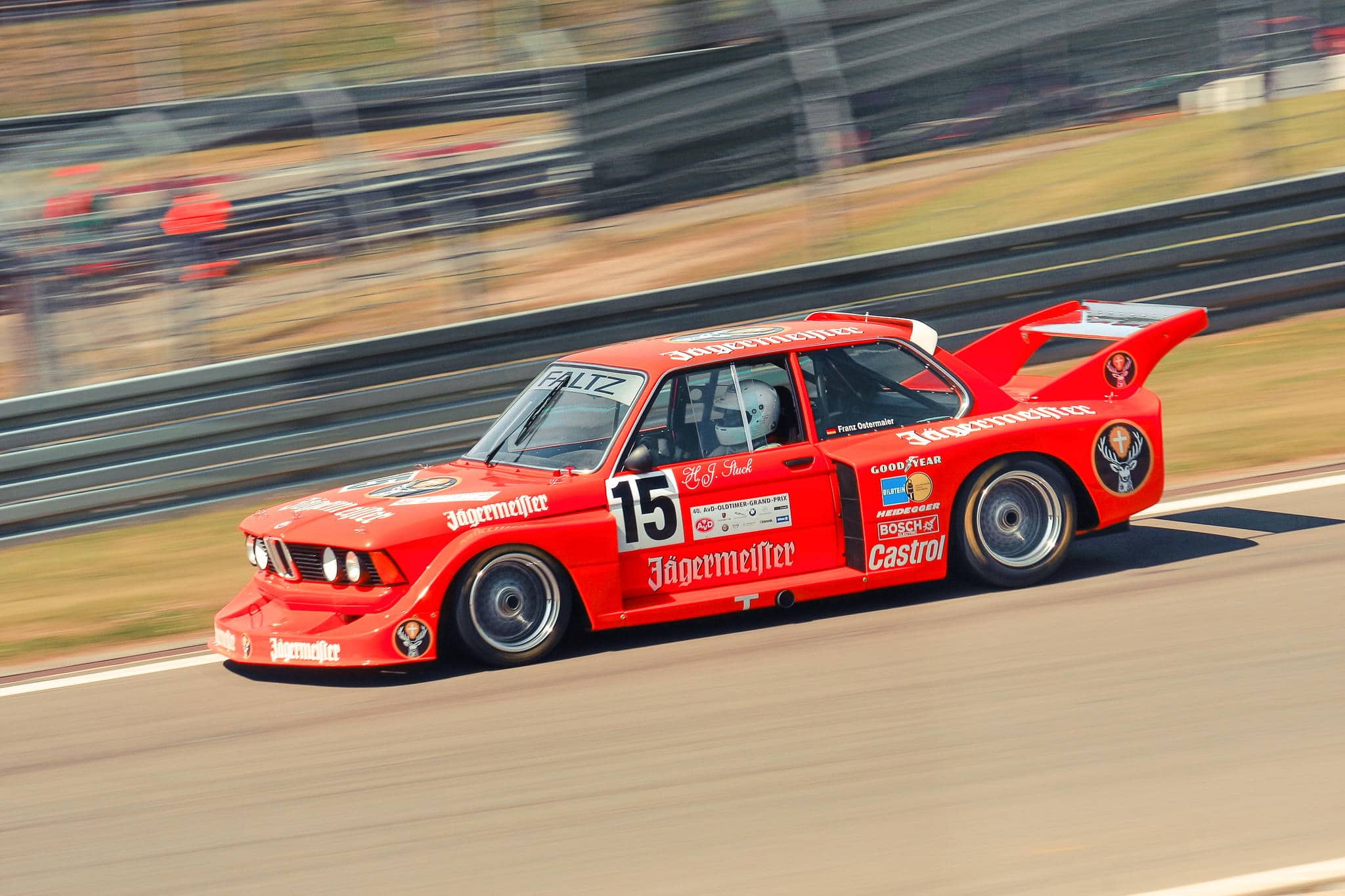
Image sourced from ThorstenKorbella
Richard has carried out nearly every aspect of the build himself to keep it within his strict budget, and with a shed like Richard’s it would be rude not to. The base is a BMW E21, which was purchased off the roadside for a mere $800. The build will take its styling cues from the Faltz Motorsport–built number 15 BMW E21 driven by Hans Stuck in the mid ’70s — but that’s really where the similarities end.
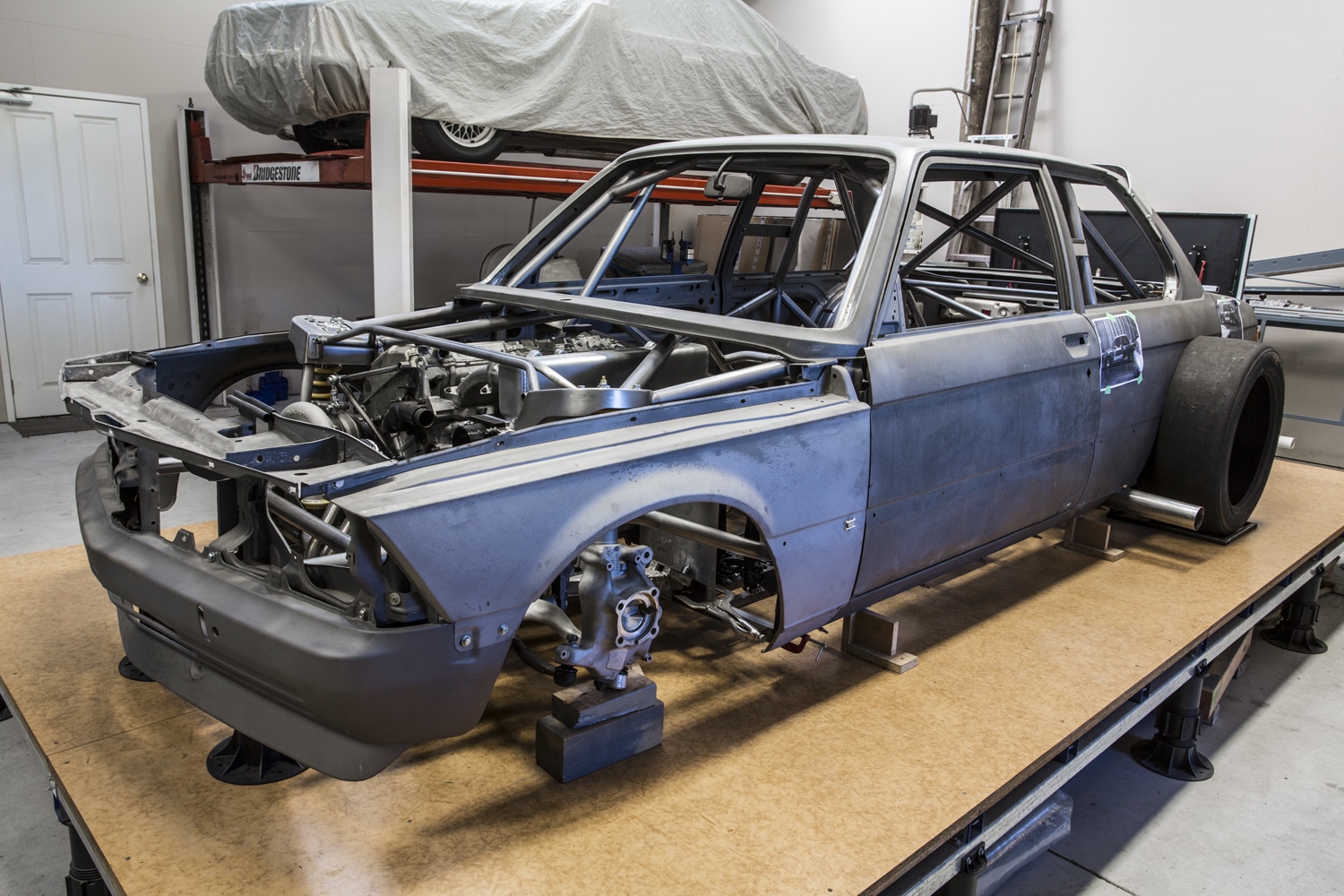
The shell has been dipped and gutted of its entire floor plan, with Richard constructing a new chassis around alloy E38 front and rear subframes. With the car not being built to any class rules, as it’s likely to only ever keep the family and clients occupied at track days, it’s allowed for a clean slate when it came to the build sheet.
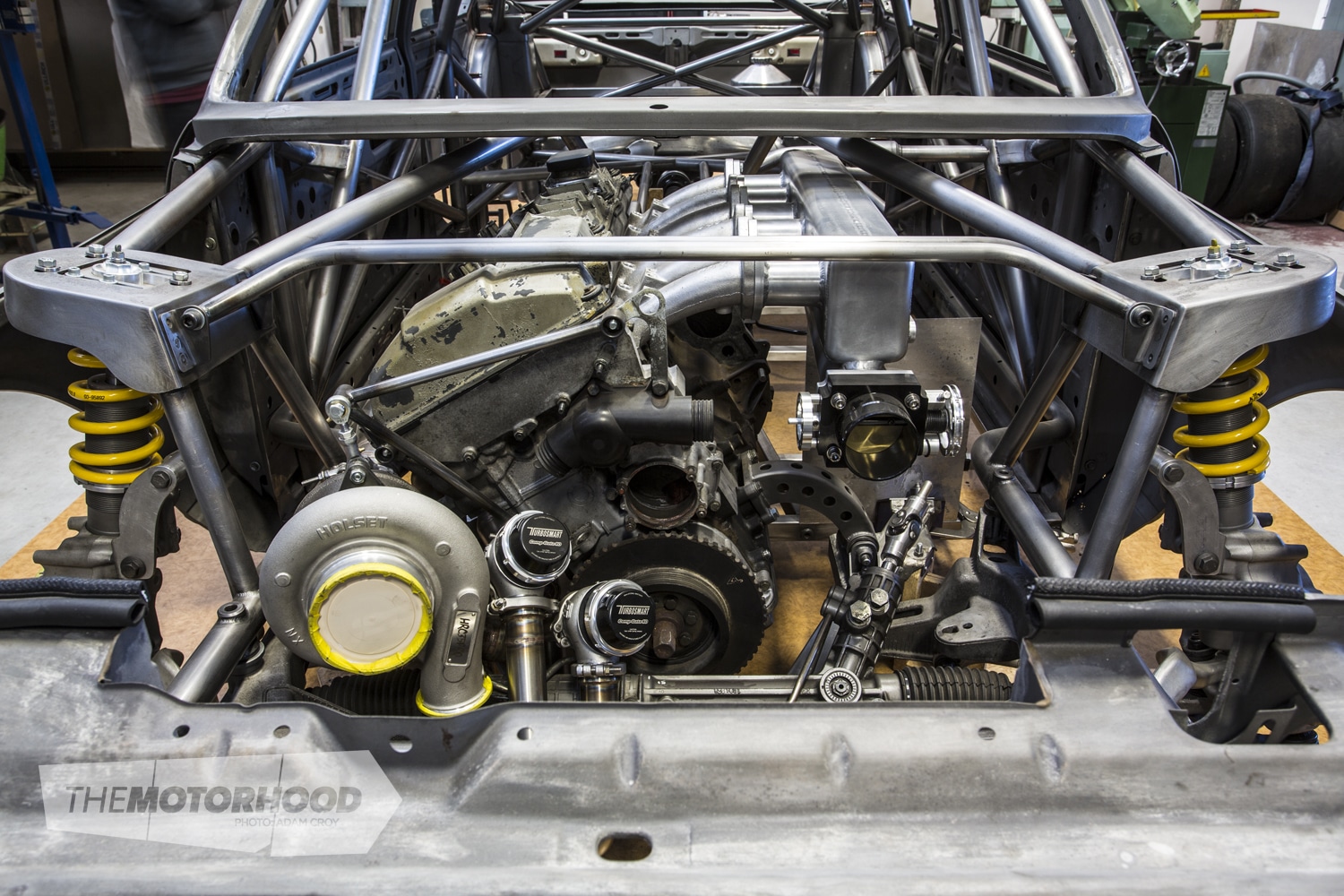
Powering the track-day racer will be a non-vanos M50 with a Holset Pro35 turbo. The dry- sumped block is currently untouched, but will feature forged internals and very aggressive cams alongside a ton of tasty hand-fabricated pieces like the intake manifold, twin-scroll exhaust manifold, and stainless side-exit exhaust. Backing the expected 447kW (600hp) straight-six is a TTi five-speed sequential and big-case 210mm LSD.
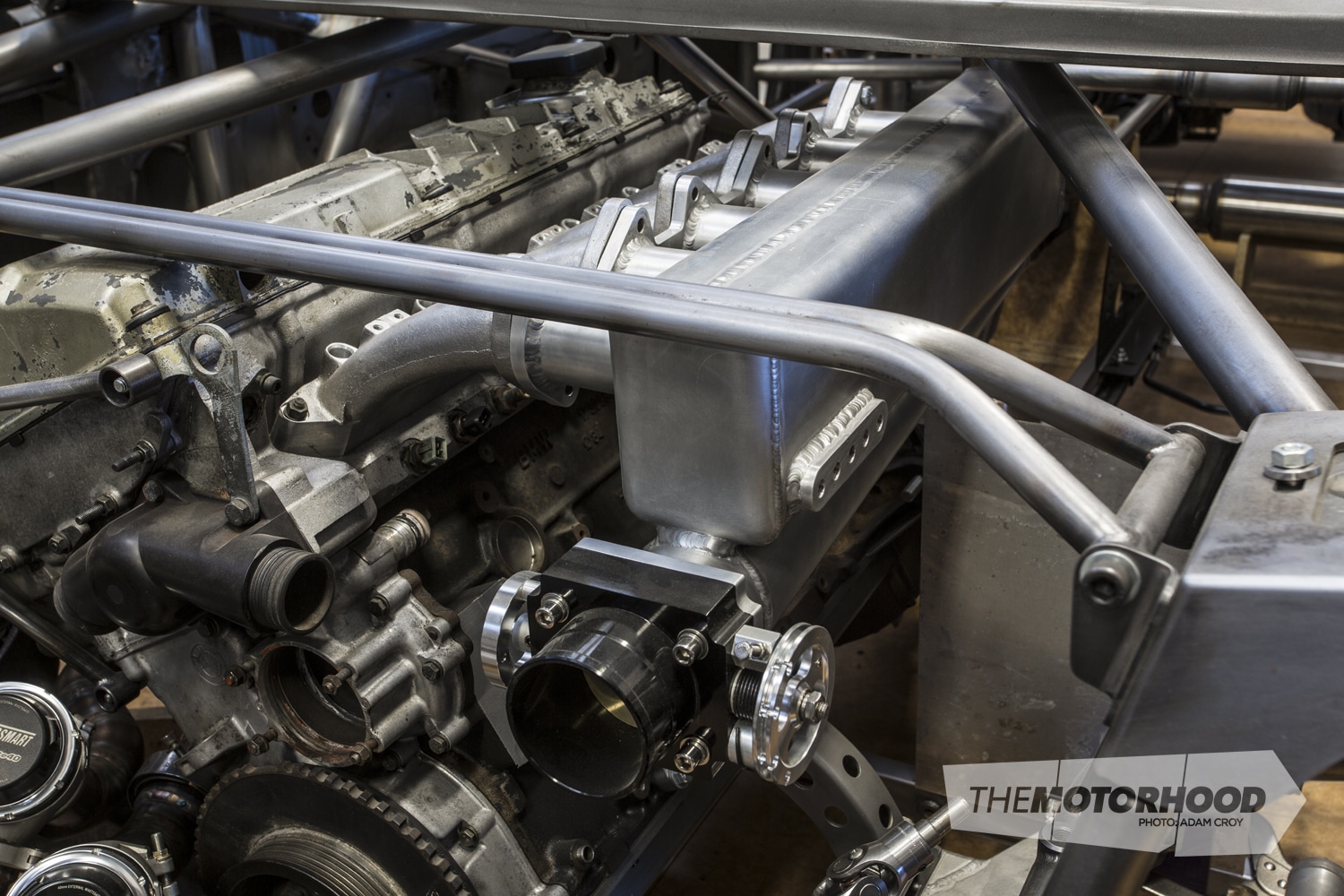
Here’s a shot of the hand-formed dual intake built by Richard. The design is similar to that used in the turbo Group B Audis. The 70mm throttle body feeds a tapered tube that runs the length of the plenum, feeding six slots positioned under each bell mouth. The idea is that all six bell-mouths receive equal amounts of air.
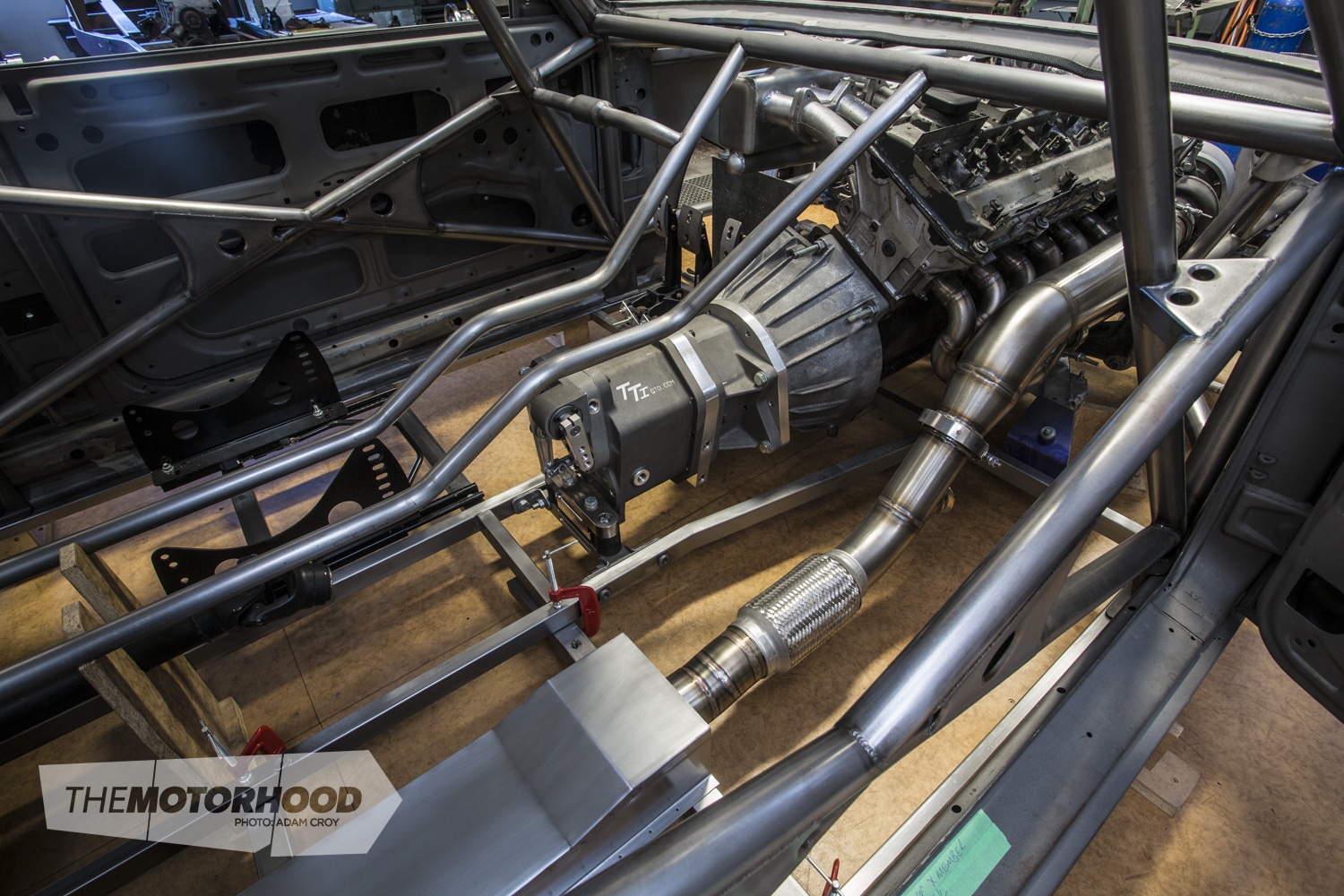
With no factory firewall to restrict things, the engine is mounted behind the front struts for ultimate weight balance. The seating position is also moved back, allowing room for the Tilton floor-mount pedal box .
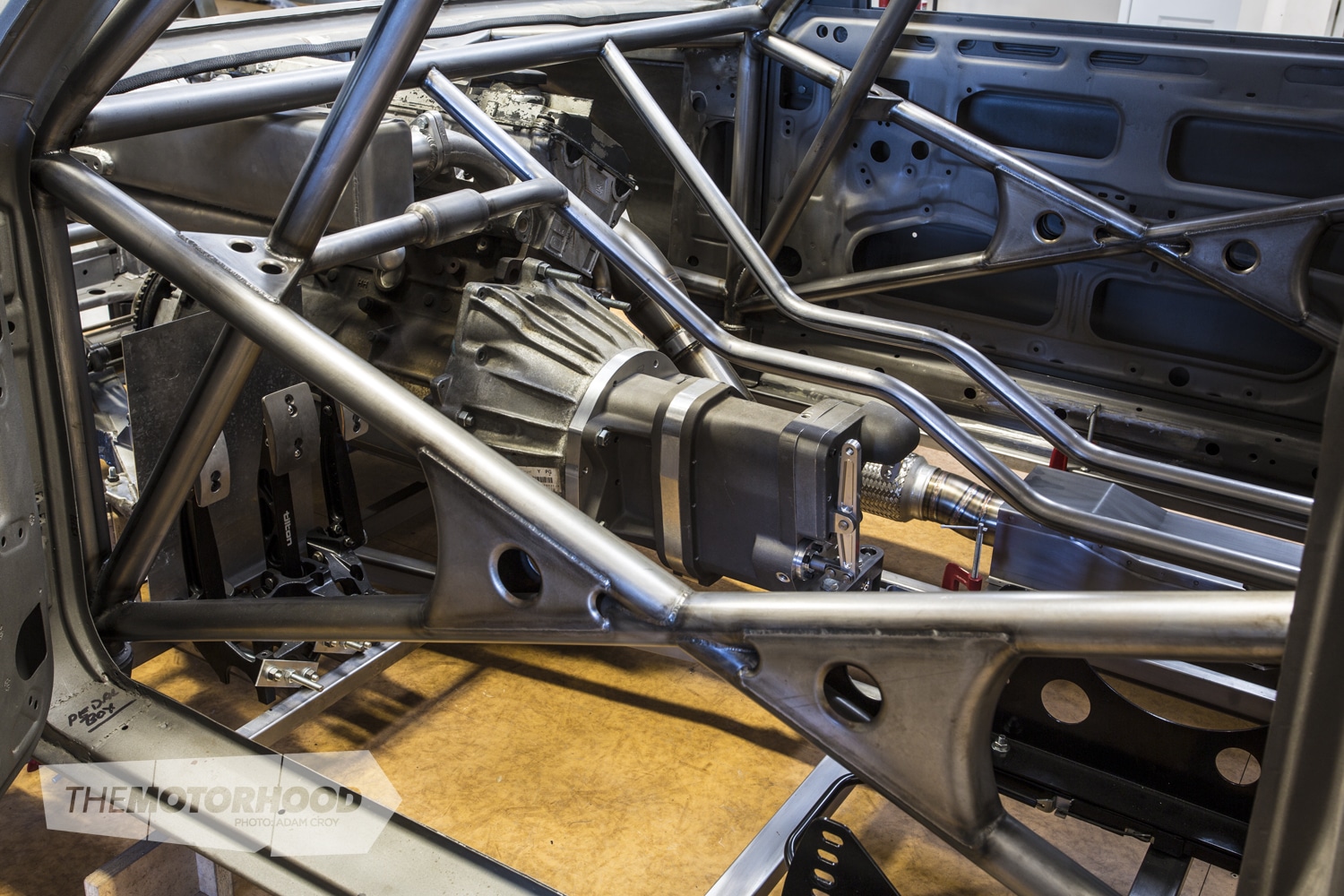
The steering column is a Woodward item, and you might have noticed that the driver position is located on the left-hand side of the chassis. This is due to the stainless spaghetti on the right-hand side making it near impossible to package in the steering. This was also like this in the original Group 5 machines, one would presume for a similar reason.
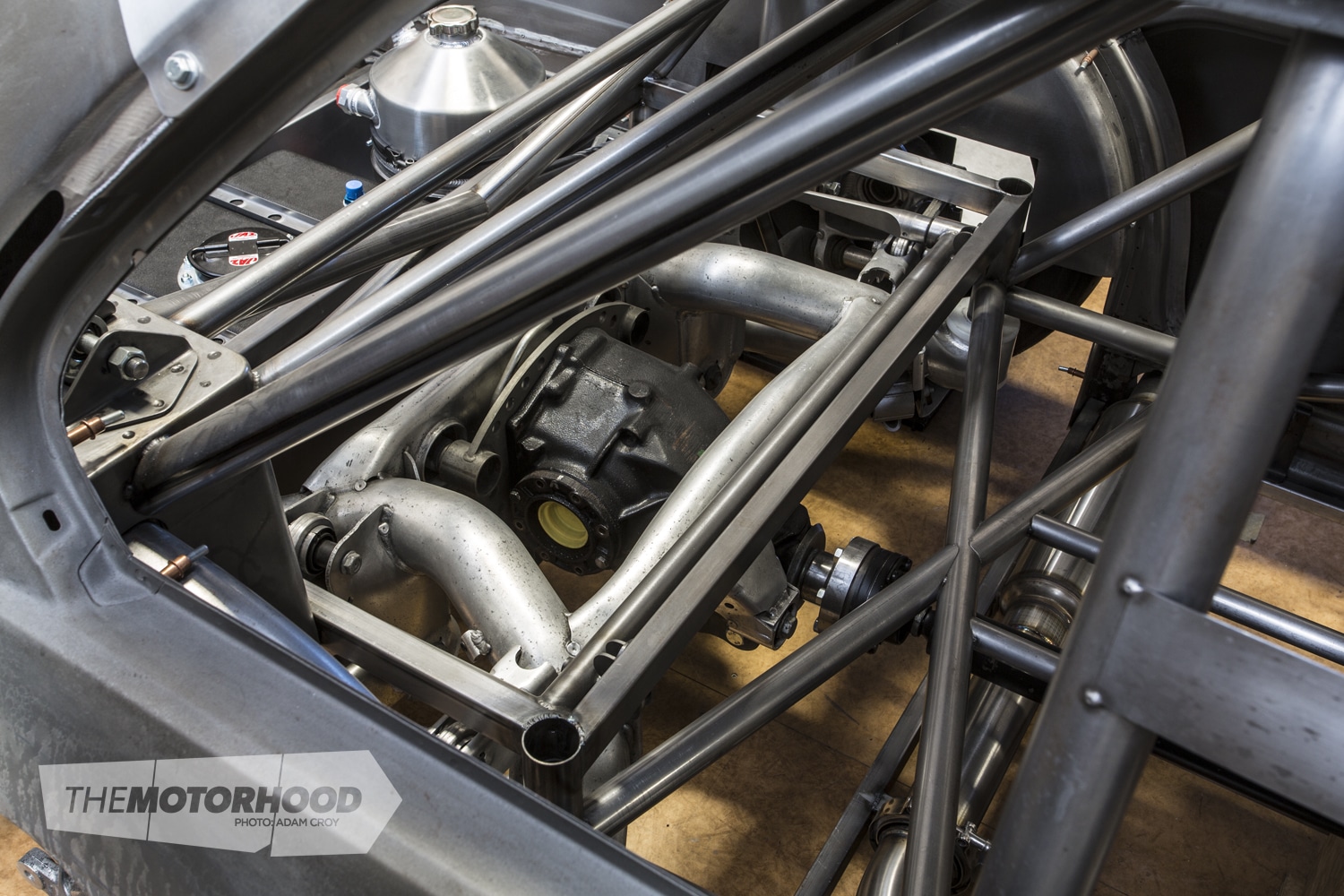
Everywhere you look the chassis work is impeccable, but it will soon be covered in sheet metal. I would hazard a guess the original cars where not cut to this level of craftsmanship. When I’m looking at builds like this I have to remind myself that it’s not art, but actually built to function. Half of this is stuff no one will ever see.
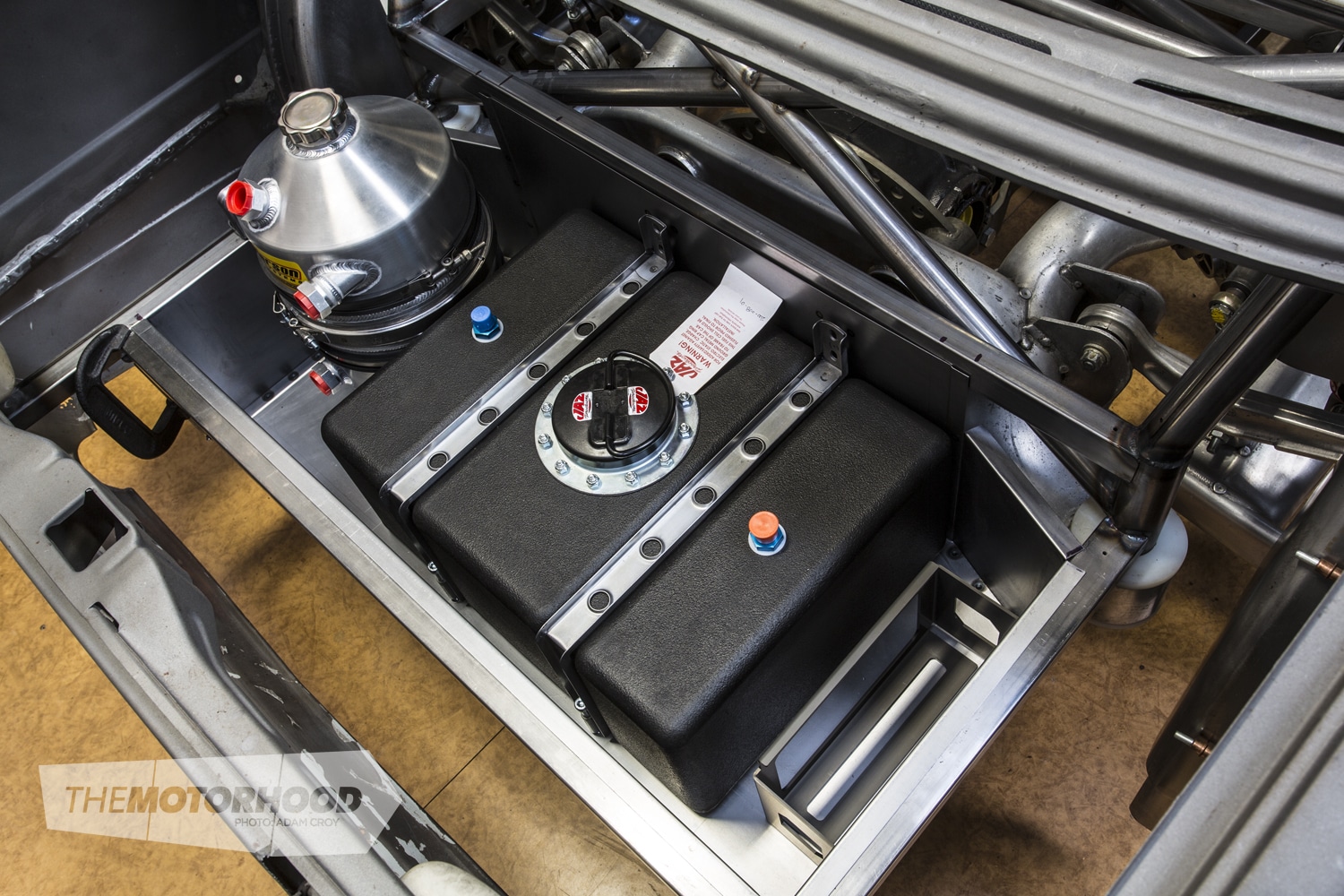
The boot space houses the fuel system and drysump tank. Since the photo shoot Richard has completed plenty of the sheet metal and has begun plumbing the fuel system.
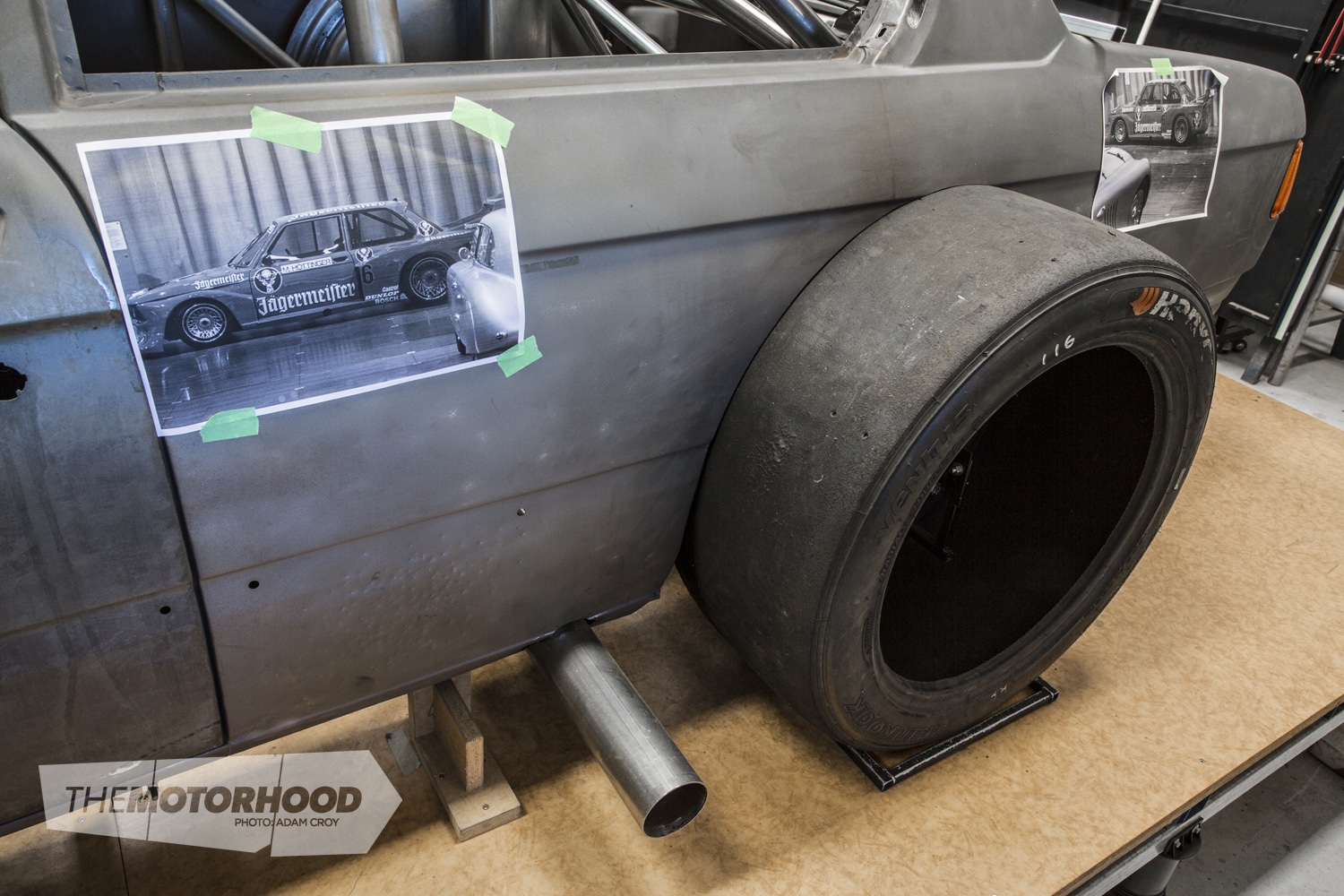
It wouldn’t be a Group 5 build without some serious width — the end result will be around 2000mm wide on the rear and 1800mm up front. The body kit will be hand formed from alloy, with the rear guards housing radiators in front of each wheel. Richard will also be forming the doors and large rear wing in alloy. The bodywork will begin with MDF plugs, before hundreds of hours are poured into forming the panels.
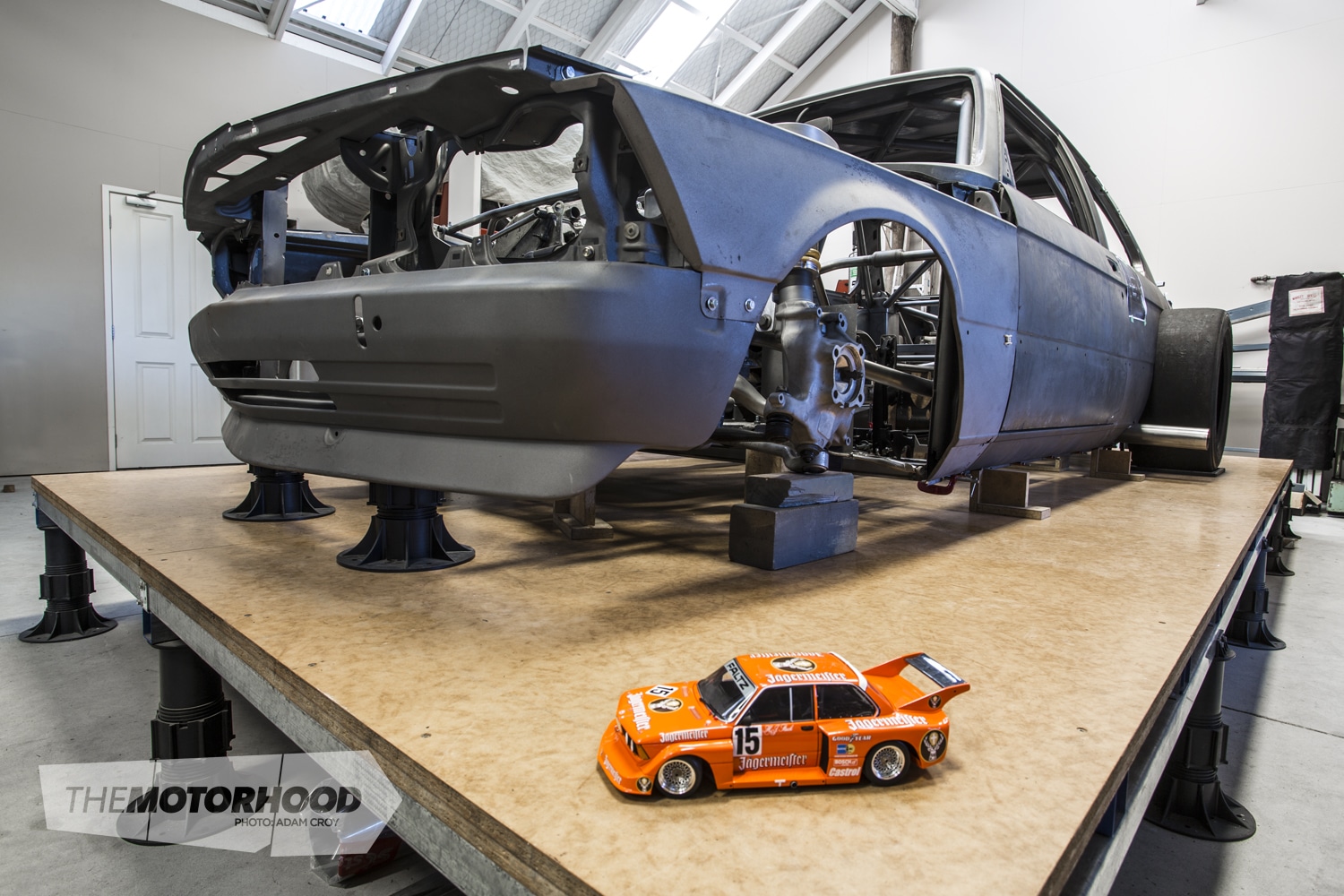
While the original cars ran 16-inch BBS wheels, finding a set in decent condition is not an easy task. The solution is a set of custom WORK wheels, with a set of 18-inch WORK Meister M1s in a 9.5-inch wide (-34) up front, and 11.5-inch (-67) for the rear currently en route from Japan — the biggest offset that WORK offer.
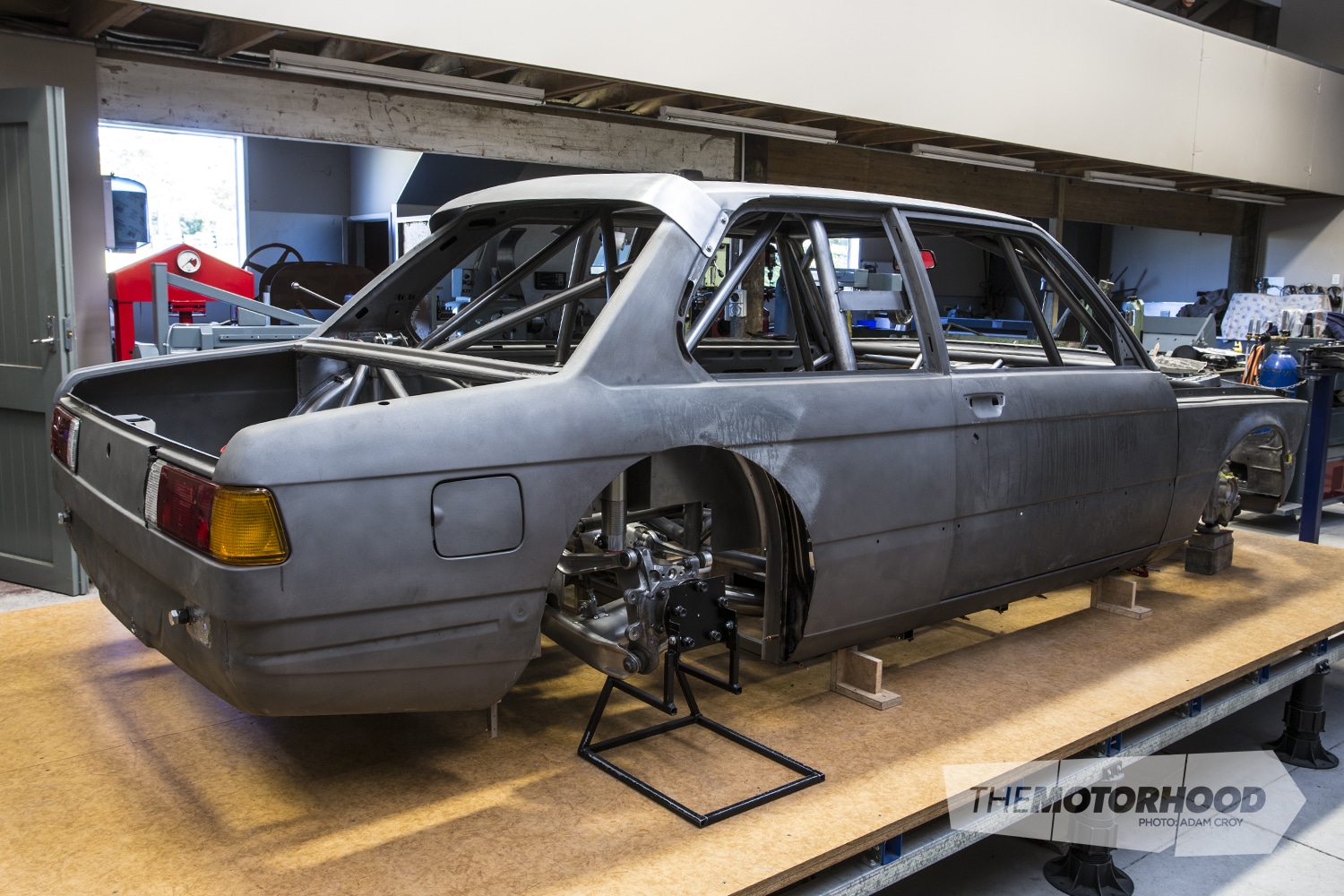
The finished project is promising to be on another level, and almost seems a shame to cover in paint. However, the fact that it will be wearing the Jagermeister livery means we can probably live with it. Richard keeps a pretty good build blog going on his Facebook page, Elan Motorsport, which is well worth a read for those with a love of fabrication. You can also check out some of the tools he has built along the way. Yip, Richard is a pretty talented insurance broker if you ask us!
We’ve added in some extra images for you to check out:
